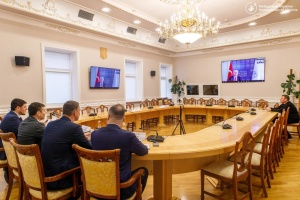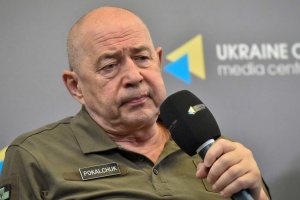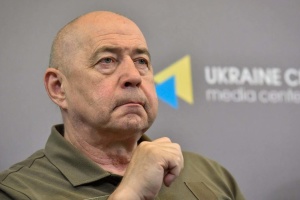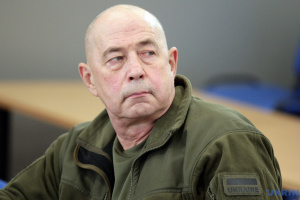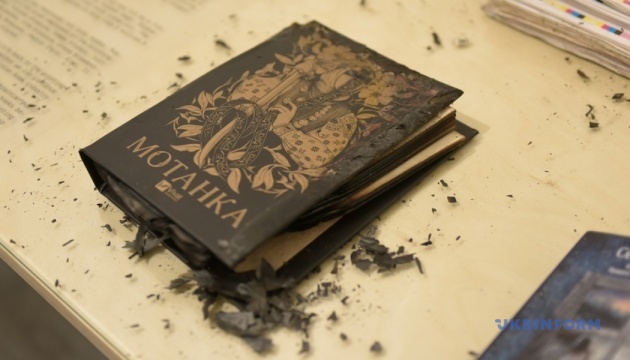
Saving Ukrainian culture and identity
This resolution introduces groundbreaking measures aimed at safeguarding Ukrainian culture and protecting Ukrainian identity. It condemns the systematic policy of Russification imposed by the Russian Federation since 2014 in its occupied areas of Ukraine. This policy aims to deny Ukrainian cultural identity, language, literature, and history. The resolution explicitly defines the deliberate destruction of cultural heritage and the erasure of Ukrainian cultural identity as war crimes and crimes against humanity. It also defines these actions as indicative of a specific genocidal intent to obliterate the Ukrainian national identity.
The extent of Russia's efforts to undermine Ukrainian national identity is abundantly clear. Consequently, the Ministry of Culture and Information Policy (MCIP) remains vigilant in documenting the destruction of cultural heritage assets in Ukraine due to Russia’s war of aggression. From February 24, 2022 through May 25, 2024, a total of 1,080 cultural heritage assets have been reportedly destroyed or damaged. Among these, 121 hold national importance, 879 local importance, and 80 have been identified recently. The majority of these assets that suffered destruction are located in the regions of Kharkiv, Odesa, Donetsk, and Kherson.
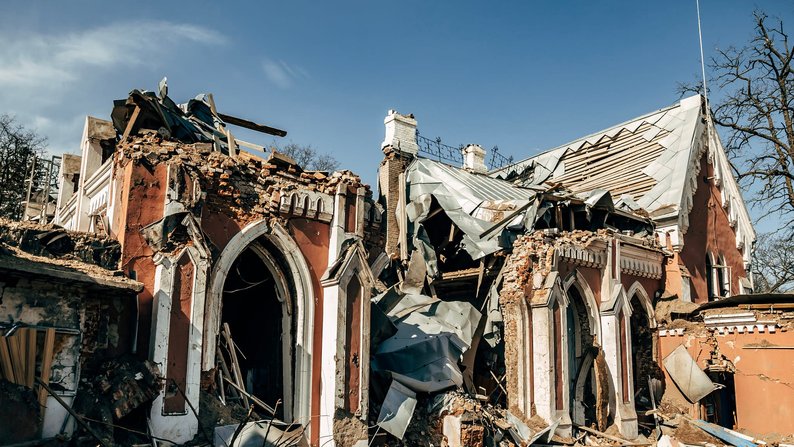
As of July 2024, almost the entire territory of Luhansk Oblast and significant parts of Zaporizhzhia, Donetsk and Kherson regions are still under temporary occupation, making it impossible to calculate the exact number of cultural institutions affected by the hostilities and occupation.
MISSILE STRIKE ON FACTOR-DRUK PRINTING FACTORY IN KHARKIV
On May 23, 2024, a Russian missile struck the Factor-Druk printing complex in Kharkiv, resulting in a devastating aftermath. According to the regional prosecutor's office, over 50 employees were present at the facility during the attack. Tragically, seven people were killed and sixteen others injured in the attack. The missile strike caused an extensive damage to the printing house, resulting in the destruction of 50,000 books burnt in fire.
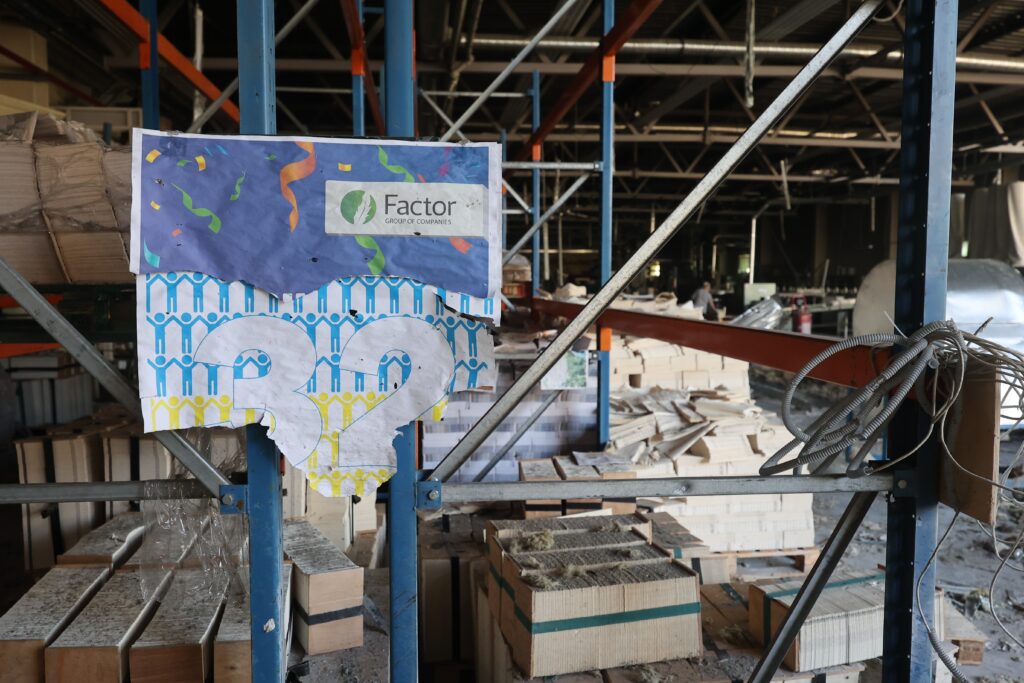
Factor-Druk was ranked among the biggest fully autonomous printing factories in Europe, pivotal in printing books for numerous Ukrainian publishers. Over 15 percent of its production catered to European clients, highlighting its significant role in the region. The printing house played a key role in Ukraine’s media sector, printing every third book and every tenth newspaper in the country. Notably, Factor-Druk was a primary printer for Vivat Publishing House and it also did printing for KSD, Ranok, Folio, Svichado, and Zelenyi Pes publishing houses just to name a few.
In response to the devastating attack on Factor-Druk, Ukrainians initiated a supportive flash mob. Vivat, particularly severely affected by the loss of their books, encouraged people to share photos of their books from the publishing house on social media using the hashtag #factordruk. Despite the destruction, Vivat's books continue to be sold in 26 countries across the globe, including the USA, Germany, France, the UK, Poland, Latvia, Estonia, as well as countries in Asia.
During the 12th edition of the Book Arsenal exhibition, Vivat showcased a poignant display that included books recovered from fire, missile fragments, and printing presses that survived the attack on Factor-Druk.
The Ukrainian publishing industry has flourished over the past decade since the start of Russia’s war of aggression against Ukraine in 2014. As the Kremlin explicitly uses the Russian language as a weapon to justify its invasion of Ukraine, the market for Ukrainian-language literature has grown to unprecedentedly high levels. There has grown up a new generation of Ukrainian authors who became part of a wider cultural renaissance that also had a profound impact on Ukrainian music, fashion, and art.
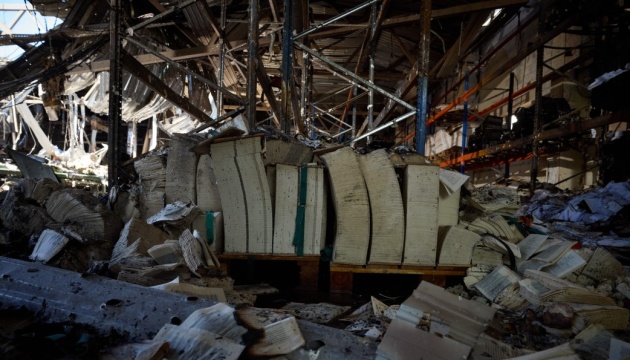
A NEW ‘’EXECUTED RENAISSANCE‘’
The Kharkiv-based Vivat publishing house released the poignant collection "Words and Bullets," featuring interviews with writers and journalists who joined the Armed Forces or the volunteer movement to help the army. Among the notable figures memorialized in the collection are the late Viktoriia Amelina and Maksym Kryvtsov.
Victoria Amelina, who received the Joseph Conrad Literary Award in 2021, was a significant contributor to literature and cultural advocacy. That same year, she established the New York Literary Festival in the village of New York located outside of the town of Bakhmut. Amelina's writings have been translated into a multiplicity of languages including Polish, Czech, German, Spanish, Dutch, and English. Her documentation of war included photographs of destroyed schools and cultural centers, as well as recording the testimonies of survivors and eyewitnesses to wartime atrocities.
Viktoriia Amelina’s life in her last years was closely involved with the children's author Volodymyr Vakulenko. Vakulenko was shot and killed by his Russian captors in the then occupied Izium, Kharkiv region, in the spring of 2022. The day before his abduction, Vakulenko buried his diary under a cherry tree near his house in Kapitolivka, his native village. Following the liberation from occupation, Vakulenko's parents recovered the diary and entrusted it to Viktoriia Amelina. She joined with supporters to compile Vakulenko's works into the book "I am Transforming... Diary of the Occupation. Selected Poems," a project sponsored by PEN Ukraine, Vivat Publishing House, and the Kharkiv Literary Museum, and assisted by the International Renaissance Foundation.
Renowned Ukrainian author Oksana Zabuzhko has recognized Viktoriia Amelina and Volodymyr Vakulenko among prominent figures in Ukraine’s new Executed Renaissance – Ukrainian-language poets, authors, and artists who fell victims to Russia’s war of aggression. It is like it was 90 years ago, when members of the intellectual elite of Ukraine were annihilated by Stalin's totalitarian regime.
In May 20024, after the release of "Slovo House. A Novel without an End", a documentary film directed by Taras Tomenko, the Ukrainians have rekindled their interest in their literary history and the phenomenon of the Ukrainian cultural "Executed Renaissance" of the 1920s-1930s. Names like Khvylyoviy, Sosiura, Johansen, Tychyna, Kurbas, Kulish, and Semenko are back in vogue. Amid Russia's war in Ukraine, both young and older generations are discovering these people of art and culture as well as the books the Soviet authorities destroyed or prohibited for publishing.
Director Taras Tomenko about his film: "These were geniuses, and I do not shy away from using that word. When they were all under one roof, it was an incredible electric charge, an amazing fusion of energy, imagination, discussions, arguments, and creativity. The 1920s were a time of cultural blossoming in poetry, theater, and more. It is beyond doubt that the Soviet authorities tried their best to channel this powerful energy towards the glorification of communist ideology.
Subsequently, a confrontation unfolded between Soviet intelligence services and the authors’ community, leaving behind ruined human lives, and involving manipulation, and both psychological and physical pressure and torture. Russia has been employing exactly the same methods in its hybrid war against Ukraine, but now in a more perfected manner exploiting the Internet, social networks, and television. But my belief is that the foundations of this pressure were laid in the Slovo House in Kharkiv."
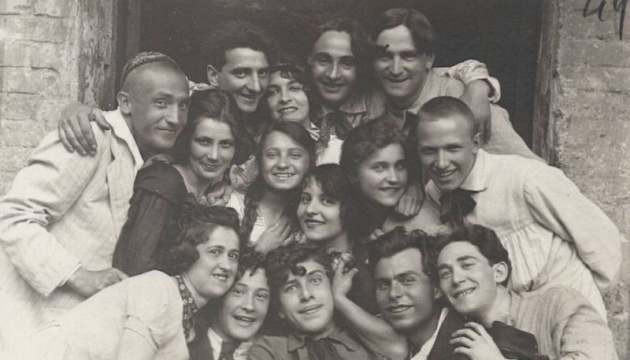
The 'Executed Renaissance' is one of the most tragic chapters in Ukrainian history. During the 1930s, the Stalinist regime systematically exterminated the Ukrainian intelligentsia that shaped our culture. Many figures from the 'Executed Renaissance' are now studied in Ukrainian literature classes in schools. The Soviet government rated the cultural elite as troublemakers threatening the communist ideology, and exterminated their entire families.
The generation of cultural figures who lived and worked in Soviet Ukraine in the 1920s and 1930s are known collectively as the Red Renaissance. After most of this generation were physically annihilated by the Soviet totalitarian regime, Diaspora literary critic Yurii Lavrynenko introduced a new term, the Executed Renaissance.
The 'Red Renaissance' took its root from the Ukrainization policy of the 1920s. It would be wrong to say that the Bolshevik regime pursued this policy out of affection for Ukraine and its culture. Ukrainization was a forced step, a concession to robust Ukrainian resistance after the defeat of the Ukrainian Revolution of 1917-1921.
The cultural life of the 1920s was concentrated in Kharkiv, then the capital of Soviet Ukraine, with the Slovo House of Writers becoming its symbol. Almost all of the Red Renaissance lived and worked under one roof: Les Kurbas and Mykola Kulish, Volodymyr Sosiura and Valerian Pidmohylnyi, Mike Johansen and Hryhoriy Epik, Mykola Khvylyoviy and Pavlo Tychyna, Mykhailo Semenko and Mykhailo Yaloviy, Ostap Vyshnia and Yuriy Yanovsky, among many others.
The wave of mass repression against cultural figures began in May 1933 with the arrest of the author Mykhailo Yaloviy. Awaiting his imminent arrest, Mykola Khvylovyi, the author of the famous slogan "Away from Moscow!", committed suicide in his apartment, No. 9, in the Slovo House. The annihilation of the intellectual elite continued during and after the Holodomor of 1932-1933, both processes being part of the genocidal policy pursued by the Soviet totalitarian regime.
The year 1937 marked the peak of the massacre of Ukraine’s intellectual elite. From October 27 to November 4, in a strive to exceed the target for eliminating "enemies of the people" ahead of the 20th anniversary of the Bolshevik coup, NKVD executed 1,111 inmate prisoners, including over 250 members of the Ukrainian intellectual elite, in the Solovky “special” prison located in Russia’s Karelia region. After the annihilation of the intellectual elite, Soviet authorities attempted to "kill" their creative works as well. Books by writers and scholars were seized from libraries, prohibited for publishing for many years, and artists' works were destroyed.
Russia's crimes against Ukrainian culture and elite are not limited to the 1930s. In 1921, Mykola Leontovych, who composed the New Year’s song “Shchedryk”, on which "Carol of the Bells," the world's most popular Christmas carol is based, was murdered in his home by a Soviet secret service operative. In 1985, during Gorbachev's Perestroika, poet Vasyl Stus died from lack of medical care in the Perm-6 prison colony.
The USSR Communist Party viewed literature and art as instruments of cultural resistance, and so it sought to destroy any manifestations of cultural identity. This began almost 100 years ago but continues into this day. During the full-scale invasion of Ukraine, Russians continue abducting and killing members of the country's cultural elite.
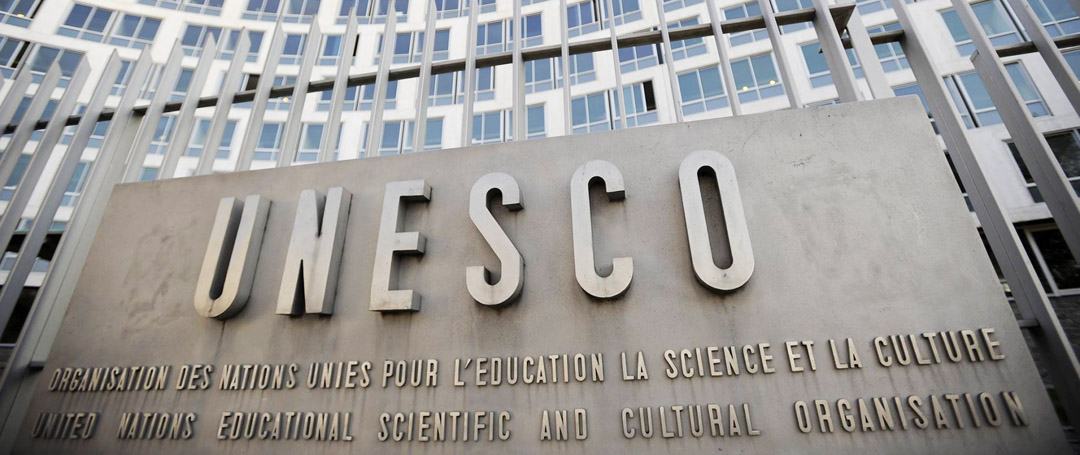
LEGAL REGULATION OF THE PROTECTION OF CULTURAL PROPERTY IN UKRAINE DURING WAR
The protection of cultural property in Ukraine is regulated by several legal acts. These include the Law of Ukraine on "The Protection of Cultural Heritage" and the Law of Ukraine on "The Protection of Archaeological Heritage." Additionally, the Guidelines for the Application of International Humanitarian Law in the Armed Forces of Ukraine, enacted by the Ministry of Defense Directive No 400 issued on September 11, 2004, provide further regulation.
Furthermore, the protection of cultural property during armed conflicts is governed by international treaties ratified by Ukraine, which are part of Ukrainian legislation, according to Article 9 of the Constitution of Ukraine. Among these treaties are the Convention for the Protection of Cultural Property in the Event of Armed Conflict, the Convention on the Protection of the Cultural and Natural Heritage, and the Convention on the Means of Prohibiting and Preventing the Illicit Import, Export, and Transfer of Ownership of Cultural Property.
The legal regime for the protection of cultural property is also detailed in subordinate legal acts, primarily in directives issued by the Ministry of Culture of Ukraine.
However, there is currently a lack of systematization, inconsistent terminology, and outdated norms or gaps that need to be addressed to ensure effective protection of Ukraine's cultural heritage. This is especially important in aligning national legislation with modern international standards, including treaties and conventions ratified by Ukraine (UNESCO and the Council of Europe), as well as the norms of the European Union. Due account should also be taken of digital transformation and of the need for the introduction of electronic registration of cultural heritage assets.
In November 2022, Russia was removed from the chairmanship of the UNESCO World Heritage Committee. However, the organization admitted that it is not yet possible to strip Russia of its membership in UNESCO, as only states expelled from the UN can be expelled from UNESCO.
Russia has repeatedly stood up against protecting Ukraine’s cultural heritage. For example, it branded as politically motivated a decision to add the historic center of Odesa to UNESCO’s World Heritage List.
The status of a UNESCO World Heritage Site is based on the convention on the protection of the world cultural and natural heritage, known as World Heritage Convention adopted by UNESCO in November 1972. This Convention primarily regulates the obligations of State Parties in relation to cultural and natural heritage and promotes international cooperation in relevant areas. Each State Party to the Convention is obligated not to harm the heritage located on the territory of other State Parties. However, this obligation is too vague since it is not specifically detailed for wartime conditions.
Only one provision of the 1972 Convention is specifically designed for the times of war: it says that the World Heritage Committee publishes and updates, as circumstances require, a list of properties featured on the World Heritage List, which need a significant amount of rescue work for which a State Party has requested assistance under the Convention (the List of World Heritage in Danger). This list specifies the approximate cost of saving cultural heritage assets. If there is an asset in danger, the Committee can add a new entry to the World Heritage List at any time. Only the assets facing serious and specific dangers, including during armed conflicts, can be featured in the list.
In 1988, Ukraine ratified the 1972 Convention on the protection of the world cultural and natural heritage, which provides the basis for the status of a UNESCO World Heritage Site.
The inclusion of a site into the World Heritage List makes it more recognizable, and highlights the political and informational consequences of it being attacked. In addition, this status can influence decisions to define such attacks as war crimes and increases the chances of the perpetrators being brought to justice under international criminal law.
In November 2023, Ukraine was for the first time elected to the UNESCO World Heritage Committee. This empowers Ukraine to participate in decision-making on the use of the World Heritage Fund and on the inscription of sites on the World Heritage List and the List of World Heritage in Danger.
On June 7, at the Vilnius Conference, 30 countries committed to increase support for artists and cultural workers, as well as to restore cultural landmarks and cultural life in Ukraine through UNESCO coordination. Countries from North America, Asia, and Europe called for "putting the cultural sector at the forefront of the process of stabilization, recovery, and reconstruction of Ukraine, the reintegration of currently occupied parts of Ukraine, and sustainable post-war development."
"Culture is an important resource. UNESCO will continue supporting Ukraine’s cultural sector. You can continue to count on us. Our support will be closely aligned with your needs," said UNESCO Assistant Director-General for Culture Ernesto Ottone Ramirez.
UNESCO's cooperation with more than 40 international and Ukrainian institutions is focused on improving the already established medium- and long-term action plan in six areas:
Monitoring, assessment, and documentation of damage to cultural heritage
Preventive and emergency measures, repairs, reconstruction, and restoration of cultural heritage
Revival of cultural institutions and cultural education
Enhancing the capabilities of cultural and creative industries
Bolstering resilience through culture
Digital transformation of the cultural sector
END NOTES
Responding to the Russian shelling of the Factor-Druk printing factory in Kharkiv, Timothy Snyder, Professor of History at Yale University branded the targeted missile strikes as "an example of a broader policy of genocide."
Russians have consistently sought to annihilate the Ukrainian nation. From the era of the Russian Empire to the present day, they have repressed, persecuted, arrested, and executed Ukrainian intellectuals.
In 1934 alone, 97 out of 193 members of the Union of Ukrainian Writers were subjected to repression. Being destroyed, this main center of culture in Ukraine lost its ability to reach out foreign audiences. Persecutions and murders committed during this time significantly disrupted the development of Ukrainian culture, interrupting and slowing down creative processes.
Russia’s illicit annexation of the Autonomous Republic of Crimea in early 2014 and the subsequent war in eastern Ukraine have raised numerous challenges, including the protection of civilians and civilian assets, safeguarding childhood, addressing humanitarian concerns, and ensuring the right to peaceful enjoyment of property. Equally crucial is the protection of the 'soul' of the people— their cultural heritage. Thousands of cultural heritage landmarks reflecting the history of various ethnic groups that once lived on the Crimean peninsula and in southern and eastern Ukraine are currently in danger.
The ongoing war since 2014 has brought about a humanitarian catastrophe, with the destruction and damage to cultural sites costing huge losses that extend way beyond material values. The actions by the aggressor country erode historical connections and threaten the preservation of the multi-ethnic Ukrainian identity.
The Centre for Strategic Communications and Information Security, Institute of Public Communications compiled this article for Ukrinform
Volodymyr Khodakivsky
Bohdana Korniychuk
Lesya Chervinska

